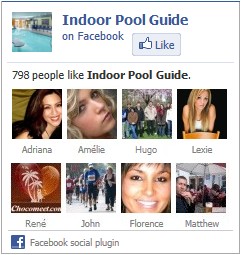
About 250 mL of sample is required to conduct all recommended tests. Sterile plastic bottles are recommended because of the risk of glass breakage. Bottles should be pre-treated with sodium thiosulphate to neutralise chlorine or bromine, thereby giving a true indication of the water quality experienced at the time of sampling. Laboratories will normally prepare these for their pool users.
Take a microbiological sample by removing the cap with one hand and making sure nothing touches the inside of the cap or bottle. The bottle is immersed neck down in the water to about 30 cm below the surface and tilted to face horizontally away from the hand and allowed to fill. The bottle can be moved away from the sampling hand until it is sufficiently full. It is then removed and the cap is replaced. The sample should be refrigerated immediately and transported to the laboratory without delay. Ideally testing should be commenced within six hours of sampling. Testing that is commenced after 24 hours of sampling cannot yield reliable information.
Sampling Location
A study commissioned by the Department of Human Services in 1995 showed that in most pools there is no significant difference between sampling points when it comes to water quality parameters, provided samples are not taken from a return point.
It is recommended that water samples be taken from near a suction point in the pool where users have not been swimming nearby in the previous 60 seconds. This should ensure that the tester is assessing the efficacy of the residual treatment process and has allowed a reasonable time for any immediate contamination to be treated.
Sampling Frequency
It should not be necessary to take frequent samples for microbiological examination when appropriate disinfectant residual and pH range is maintained, the pool has good clarity and is free from extraneous matter.
For quality assurance purposes, sampling at the beginning of a season for seasonal pools, commissioning of new pools and at periodic intervals thereafter, is usually enough to confirm that the disinfection regime is adequate and the pool is functioning adequately.
Quarterly bacteriological testing is recommended as a guide for most pools. Specialty pools, such as toddler pools, hydrotherapy pools and spa pools can be considered a higher risk because of temperature, high bather loading and pollution sources, and can justify more frequent monitoring. Pools with variable water quality or poor circulation and hydraulics can also justify more frequent monitoring.
Documentation
Documentation is an essential part of a quality assurance program. Data recorded from a quality assurance program will be of assistance in the future in making operational decisions based on objective evidence.

